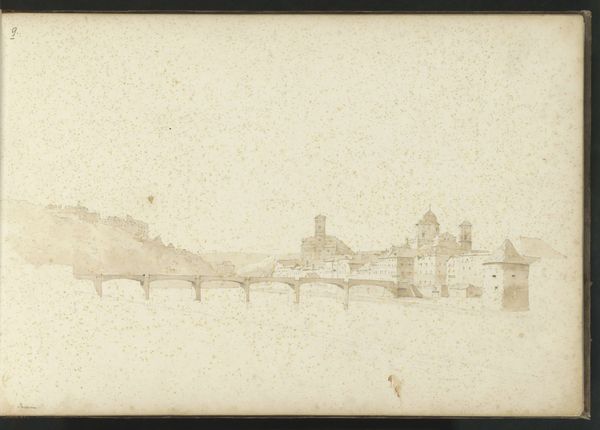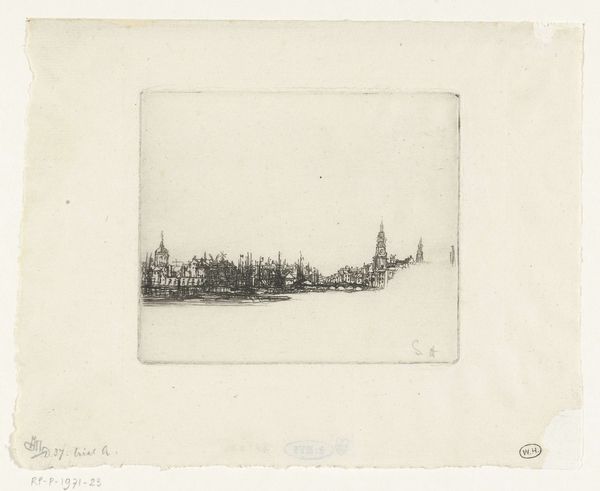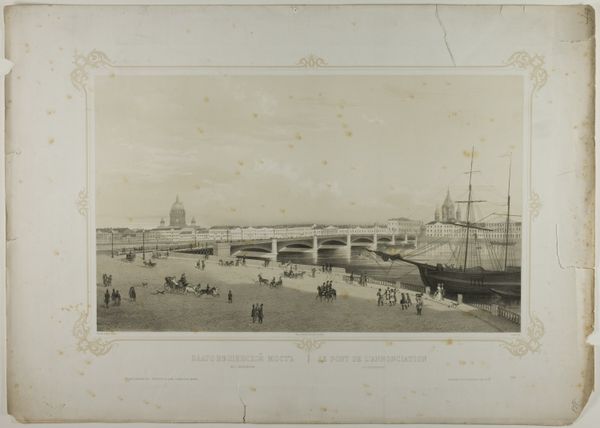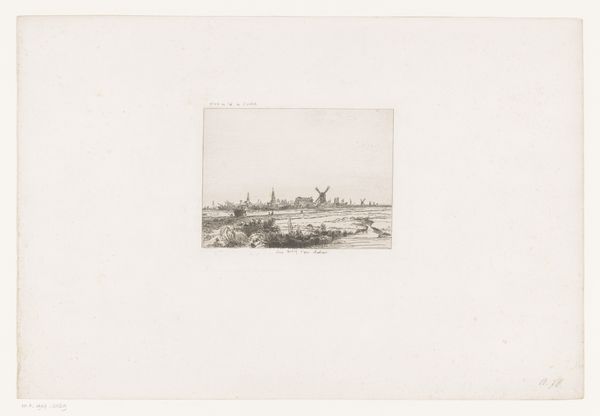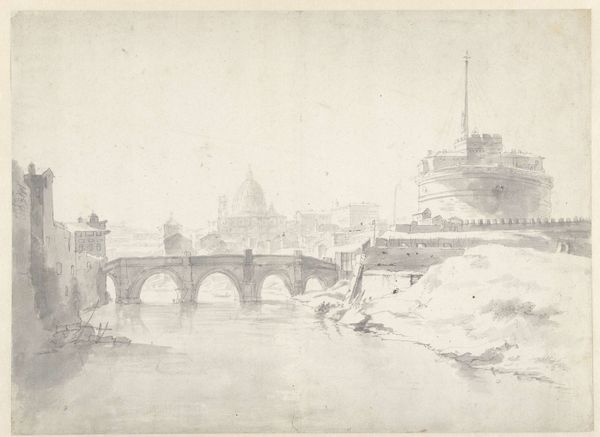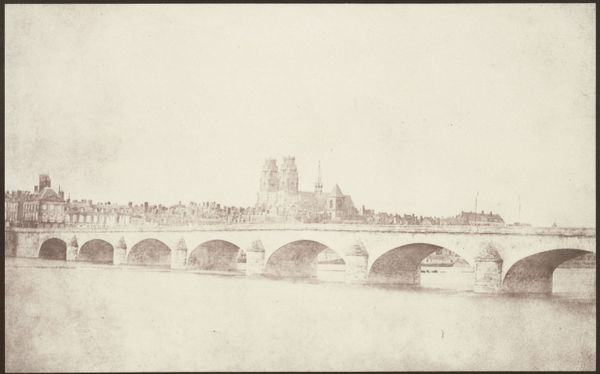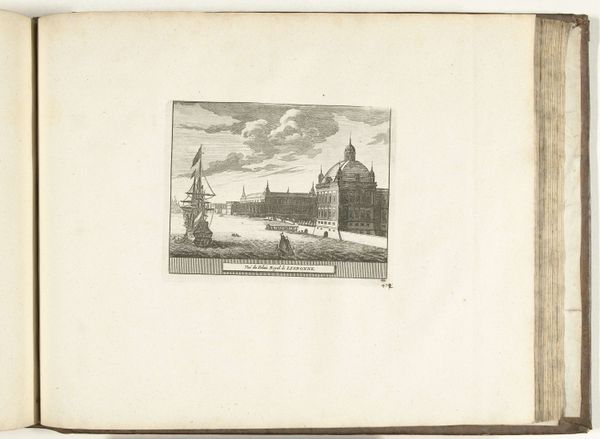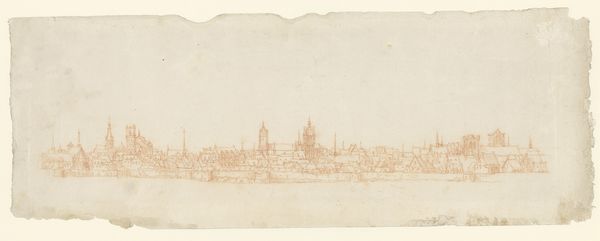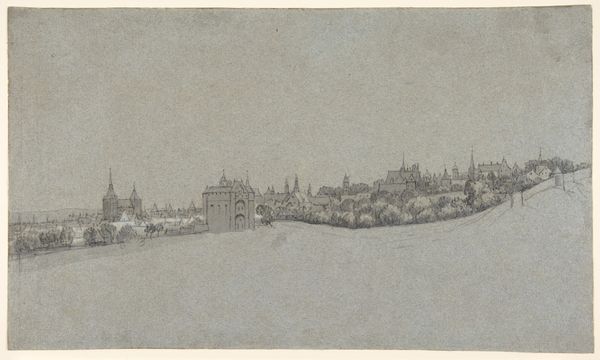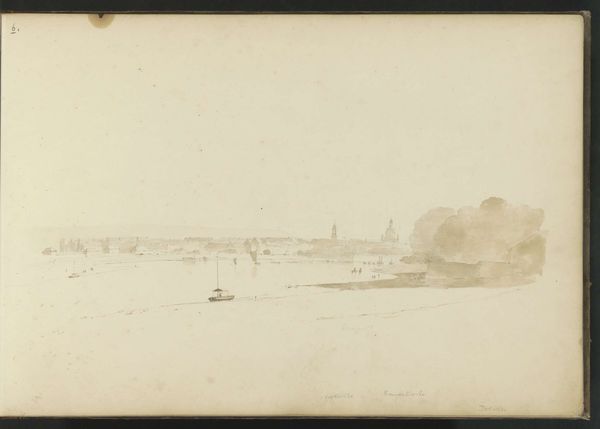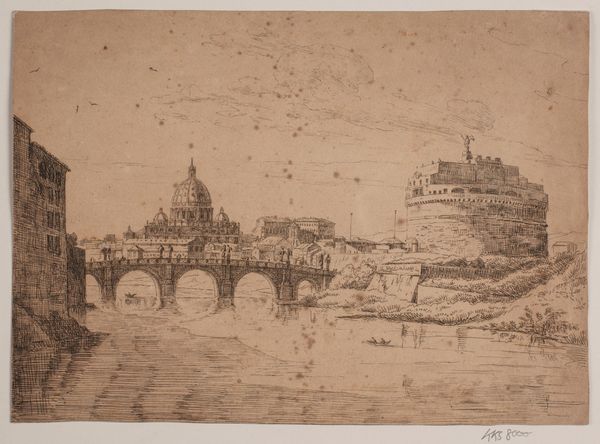
Copyright: Rijks Museum: Open Domain
Curator: This delicate pencil drawing offers a fascinating glimpse of Dresden. Entitled "Gezicht op Dresden met de Frauenkirche", it's attributed to Kasparus Karsen and thought to have been created between 1820 and 1896. The work currently resides here at the Rijksmuseum. Editor: It feels unfinished, doesn't it? Almost ghostly in its understatement. The architectural forms emerge tentatively from the paper, making the city feel fragile, vulnerable, even ethereal. Curator: Precisely! That effect aligns with the Romanticism style. Think about the social and political backdrop—Dresden was undergoing significant urban development during this period, rebuilding and modernizing. An artist might see that with ambivalence. Editor: True. But let's not overlook the sheer craft involved. Karsen wasn't simply dashing this off. Look at the repetitive strokes, creating that arched bridge and the clear technical proficiency evident. Pencils weren't always the ubiquitous art supply that we know now. Sourcing, prepping, and wielding them meant something to an artist of the 19th century. Curator: That’s an excellent point. The choice of pencil over, say, a more ‘noble’ medium like oil paints is significant. It speaks to a changing artistic landscape, where drawing, with its inherent immediacy, began to gain more respect, exhibited and collected even in academic art circles. It was no longer merely a preparatory step. Editor: Also, look at how the paper impacts the drawing's texture and readability; did Karsen use locally sourced material? The availability of these tools may have dictated some of the overall composition and affected the final visual presentation. Curator: Indeed. And from a historical perspective, we also must wonder who this drawing was *for*. Was it commissioned, a personal study, or perhaps intended for a larger project? Its presence in the Rijksmuseum now gives it a public role Karsen might never have imagined. The politics of representation of place are complex. Editor: So, we have a cityscape seemingly sketched almost in passing that reflects larger cultural shifts around material use, industrial means, and artistic values of its time. Fascinating. Curator: Absolutely. A reminder that even seemingly simple drawings contain layers of history and meaning, which also provide glimpses into production, consumption, and collection in their time.
Comments
No comments
Be the first to comment and join the conversation on the ultimate creative platform.

